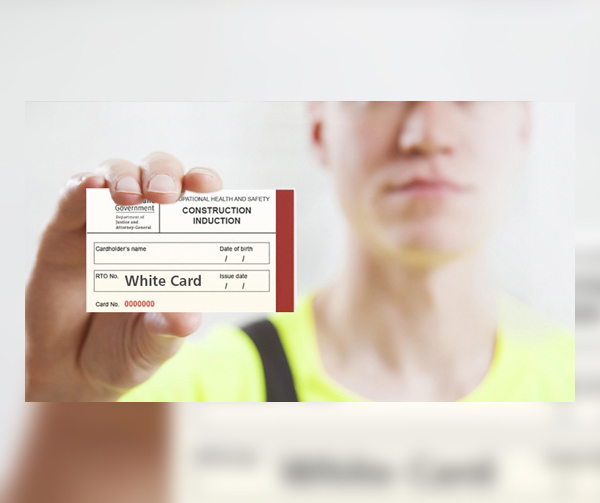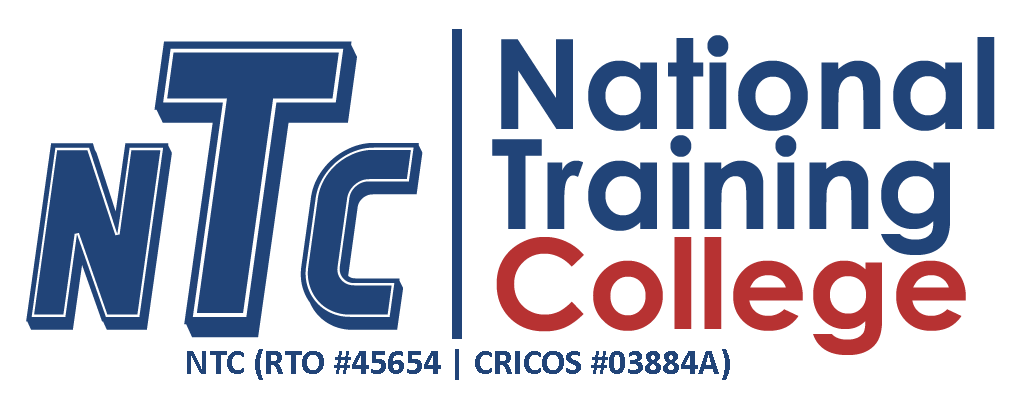- Course Name
- CPCCWHS1001 Prepare to Work Safely in the Construction Industry (White Card)
- Course Cost
- $99
- Course Code
- CPCCWHS1001
- Course AKA code(s)
-
CPCCWHS1001Prepare to Work Safely in the Construction IndustryWhite Card
- Is the course accredited?
- Yes
- Course length
- 6 Hours
- Cricos Provider
- Yes – International Students Accepted

Prepare to Work Safely in the Construction Industry (White Card)
CPCCWHS1001 Prepare to Work Safely in the Construction Industry is a nationally recognised certification and is better known in the workplace and industry as the White Card.
Participants will be those seeking the mandatory work health and safety training required prior to undertaking construction work. The unit requires the person to demonstrate personal awareness and knowledge of health and safety legislative requirements in order to work safely and prevent injury or harm to self and others.
This unit meets the general construction induction training requirements of:
- Part 1.1 Definitions and Part 6.5 of the Model Work Health and Safety Regulations
- Division 11 of Part 3 of the Occupational Safety and Health Regulations 1996 for Western Australia
- Division 3 of Part 5.1 of the Occupational Health and Safety Regulations 2007 for Victoria.
It is expected that site-specific induction training will be conducted prior to conducting construction work
First Aid Pro is Registered Training Organisations (RTOs) authorised to deliver CPCCWHS1001 Prepare to Work Safely in the Construction Industry course.
COVID-19 Precautions
At First Aid Pro your health and safety are our priority. Infection control measures and COVID-19 practices are applied across all our training facilities. Please remember if you are unwell or experiencing any symptoms, we ask that you contact us to reschedule your training. For further information please email [email protected].
How is the Course Delivered?
Training and Assessment are delivered Face to Face (6 hours)
Plus + Prior to attending the face-to-face training session, you are required to complete the pre-course reading, is a self-paced, self-directed, component of the course. The actual number of study hours required for each learner varies depending on the learners existing knowledge, skills, and experience. You will be required to complete an and LLN check on arrival of the training day.
How is the Course Structured?
All learners will be assessed through a combination of the following assessment methods:
- Practical Demonstrations: Correctly fitting personal PPE/ Oral communication
- Project (Complete Risk Assessment)
- Knowledge Assessment
Course Requirements
- Applicants must be 16 years old or over
- Present Photo ID on the day
- Permit a photo on the day of head, neck, and shoulders
- Use numeracy skills to locate and recognise numbers commonly used in safety signs.
- Communicate effectively by asking questions to clarify instructions and telling another person about a construction problem or hazard.
- Read and follow simple pictorial safety instructions and simple safety instructions written in English.
- Notify office if any additional Learning, Literacy or Numeracy support is required
Course Fees
$99
Course Covers
This course covers identifying and orally reporting common construction hazards, understanding basic risk control measures, and identifying procedures for responding to potential incidents and emergencies. It also covers correctly selecting and fitting common personal protective equipment (PPE) used for construction work.
White Card Certificates
On successful completion of this course students will be issued with the following:
- A statement of attainment for CPCCWHS1001 Prepare to work safely in the construction industry or referred to as (White Card).
- White card issued from Firstaidpro (RTO:40407)
Performance Evidence
A person demonstrating competency in this unit must satisfy the requirements of the elements, performance criteria, foundation skills, and range of conditions of this unit, in addition to the specific performance and knowledge evidence described below.
The participant must:
- identify and orally report two construction hazards
- orally explain how risk could be reduced or removed in relation to those two hazards
- select appropriate personal protective equipment (PPE) to control the risk
- orally explain basic procedures for responding to incidents and emergencies, including types and purpose of the following fire safety equipment:
- fire blankets
- fire extinguishers, including water, carbon dioxide, powder and foam
- hose reels and mains
- identify and orally explain the meaning of required safety signs and symbols
- orally explain the purpose of job safety analyses (JSAs), safe work method statements (SWMS) and safety data sheets (SDS)
- orally explain the roles of the following designated health and safety personnel:
- first aid officers
- work health and safety representatives
- work health and safety committee members
- supervisors.
The person must also demonstrate correctly fitting to themselves the PPE listed below:
- eye protection
- hearing protection
- hard hat
- high visibility retro reflective vest.
Knowledge Evidence
A participant must demonstrate knowledge of:
- basic duty of care, and the roles, rights and responsibilities of business owners and workers in relation to working safely while undertaking construction work
- basic meaning of the terms ‘hazard’ and ‘risk’
- basic principles of risk management, including the following five steps in order:
- identify hazard
- assess risk
- consult and report
- control hazard
- review
- basic procedures for accessing first aid
- construction hazards, including those relating to:
- asbestos
- confined spaces
- electrical: power lines, cords and equipment
- excavations and trenches, including underground services
- dust
- falling objects
- hazardous substances and dangerous goods
- hot and cold work environments
- manual handling
- noise
- plant and equipment operation
- traffic and mobile plant
- unplanned collapse
- ultraviolet radiation
- working at heights, including scaffolding
- construction work that requires a high risk work licence
- types, purpose and use of PPE used in construction, as specified in the performance evidence, and including safety footwear, harnesses and respiratory protection, and ultraviolet (UV) protective clothing and sunscreen
- construction emergencies, including:
- chemical spill
- fire
- injury to personnel
- structural collapse
- toxic or flammable vapour emission
- vehicle or mobile plant accident
- construction incidents, including:
- incidents resulting in personal injury or damage to property
- near misses or dangerous occurrences that do not cause injury but may pose an immediate and significant risk to persons or property, and need to be reported so that action can be taken to prevent recurrence
- safe work practices that should be followed in construction work, including:
- accessing and using site amenities for drinking water, hand washing and toilets
- following safety procedures when performing work tasks and using equipment
- identifying and reporting hazards, incidents and injuries in the workplace
- keeping the work area clean, tidy and free from debris
- not using or being affected by drugs and/or alcohol while at work
- preventing bullying and harassment in the workplace
- selecting and using required PPE
- smoking only in designated areas
- storing and removing waste and debris in designated areas
- meanings and symbols associated with construction safety signs, symbols and tags, including:
- emergency information signs: exits, emergency equipment and first aid
- fire signs: location of fire alarms and firefighting equipment
- hazard signs and symbols: danger and warning
- regulatory signs and symbols: prohibition, mandatory and limitation or restriction
- safety and lockout tags: danger and out-of-service tags.
